I'm using ios 9 sdk. I created this view hierarchy setup with autoloayout:
----- Top
| 30
----- CustomView (A)
|
|
-----
| 0
----- Bot
I'm trying to create a second CustomView (call it B) behind the first (call it A), scaled by 80% in both directions, and above A by 5 points. So only the top of B is visible.
This should be easy, but it is not. Applying a -5 points translation and a .8 scaling on B moves B down instead of up, because autolayout seems to use the anchor point (set to middle by default) to position B: it seems it detects that a scaling has been applied and recenters B vertically - moving it down.
Changing the Anchor point to (x=0.5,y=1) moves A and B up by half their size, i don't understand why. So it does not fix the problem.
Any idea ?
Edit: some code
var card = new CardView();
InsertSubview(card, 0);
card.TranslatesAutoresizingMaskIntoConstraints = false;
this.AddConstraints(
card.AtTopOf(this, 30),
card.WithSameWidth(this).WithMultiplier(.95f),
card.WithSameCenterX(this),
card.AtBottomOf(this)
);
var transform = CGAffineTransform.MakeTranslation(0, -10);
transform.Scale(.8f,.8f);
Transform = transform;
Result: card is not at 20pts from top, it is at about 50pts, beside its original position of 30pt.
